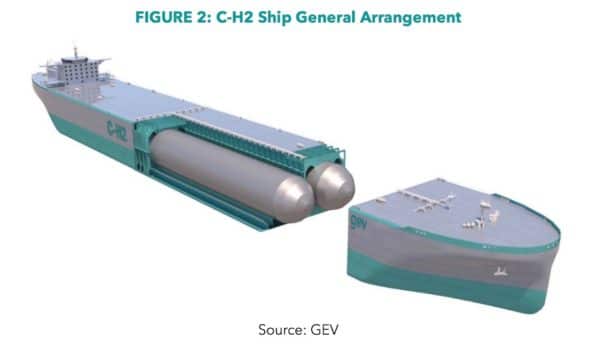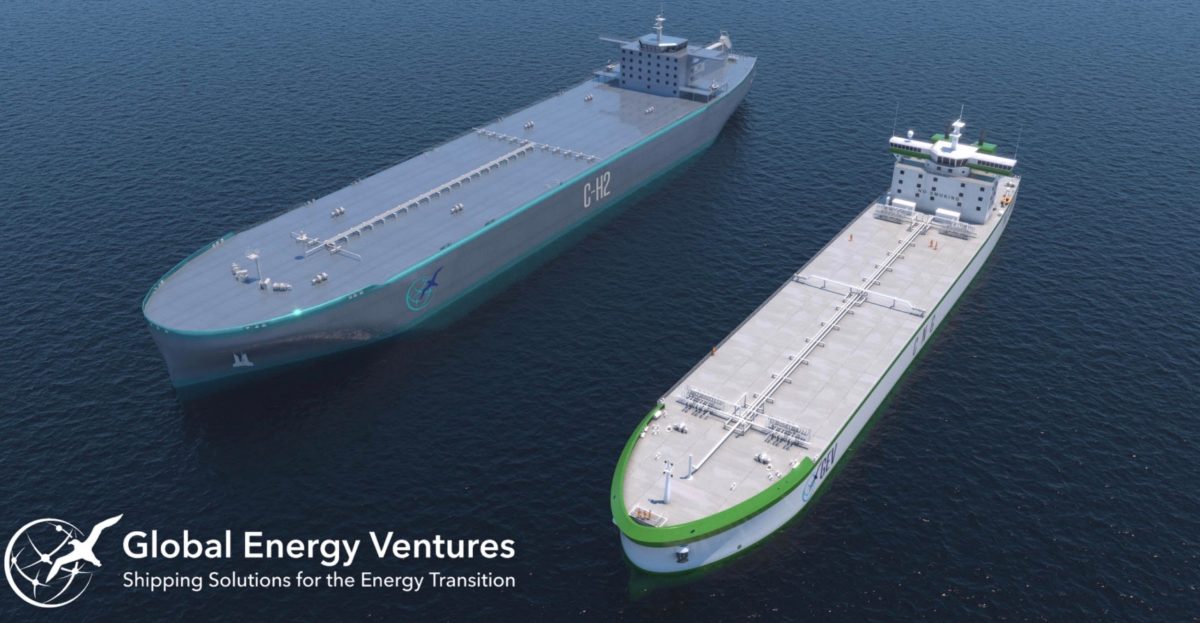Global Energy Ventures (GEV) announced to the ASX yesterday that it has commenced development of a pilot-scale C-H2 ship capable of carrying 430 tonnes of hydrogen by the mid-2020s.
GEV believes that by the mid-2020s the scale, timeline, and downstream opportunities for green hydrogen projects in both the Asia Pacific and Europe will be so substantial as to take advantage not just of this prototype ship, but an operating fleet of C-H2s.
To achieve this goal GEV is targeting American Bureau of Shipping (ABS) Approval in Principle (AIP) in Q3 2021 and Full Class Approvals by late 2022. The 430 tonne vessel will be scaled version of the 2,000-tonne C-H2 ship which already received AIP in March.
GEV’s managing director and CEO, Martin Carolan, said in a statement that GEV’s “design and development strategy for the 2,000-tonne ship proved that large commercial scale C-H2 ships are possible and paved the way for the H2 marine transportation industry and will ensure we establish ourselves in the marine transportation of green hydrogen.”
GEV’s intention with the scaled down pilot model is to include green hydrogen customers who want to inject and blend such volumes of green hydrogen into their existing natural gas pipelines, and markets only in the early stages of green hydrogen adoption.
Through extensive marketing, says Carolan, GEV believes that by the mid-late 2020s, a Handymax sized vessel or “pilot-scale ship will be complementary to partner discussions and GEVs target to develop a fully integrated green hydrogen supply chain from Northern Australia. This includes GEV’s own renewable energy project to produce green hydrogen based on a specific customer use case, delivered with our own C-H2 ships.”
The 430t ship will be made up of two large 12m diameter tanks within the hull of the ship which will store hydrogen under 250 bars of pressure. These steel tanks are lined with stainless steel to help prevent embrittlement from the hydrogen molecules entering the steel’s molecular structure.

“Blending is an attractive source of near-term demand for hydrogen at low blend volumes due to low incremental costs and aligns with C-H2s modular approach for production scale-up”, Carolan continued. “The scale of the 430t ship can alleviate the additional infrastructure requirements that a liquefaction or ammonia project will require to deliver a pure hydrogen gas to the end user. Regions with aspirations to develop a low-carbon hydrogen economy are likely to turn to grid injection as a means of cultivating a market and stimulating investment into supply.”
This content is protected by copyright and may not be reused. If you want to cooperate with us and would like to reuse some of our content, please contact: editors@pv-magazine.com.









3 comments
By submitting this form you agree to pv magazine using your data for the purposes of publishing your comment.
Your personal data will only be disclosed or otherwise transmitted to third parties for the purposes of spam filtering or if this is necessary for technical maintenance of the website. Any other transfer to third parties will not take place unless this is justified on the basis of applicable data protection regulations or if pv magazine is legally obliged to do so.
You may revoke this consent at any time with effect for the future, in which case your personal data will be deleted immediately. Otherwise, your data will be deleted if pv magazine has processed your request or the purpose of data storage is fulfilled.
Further information on data privacy can be found in our Data Protection Policy.